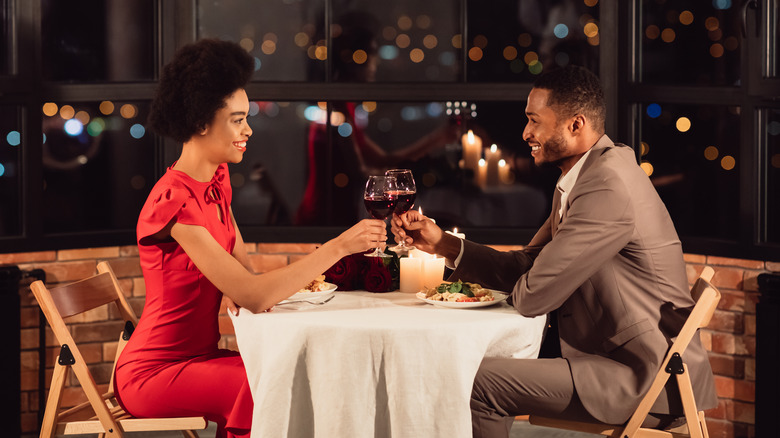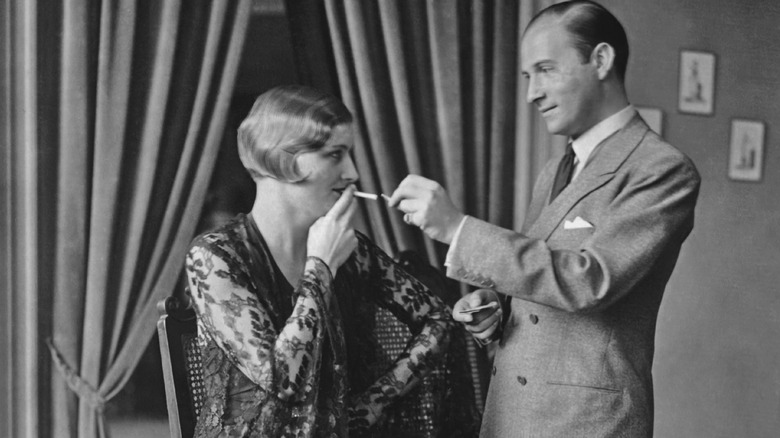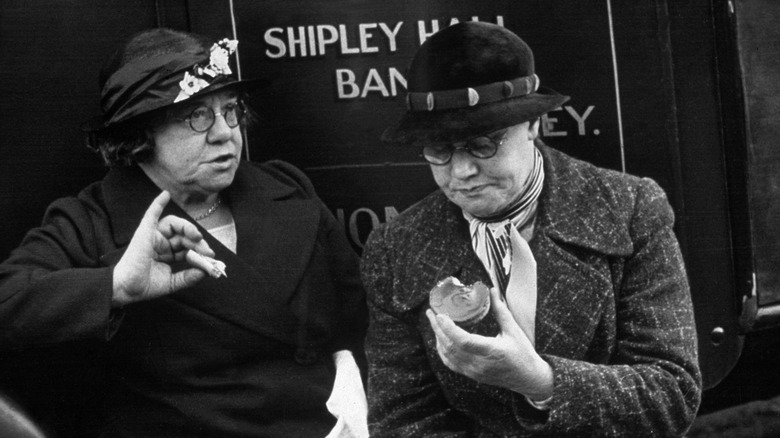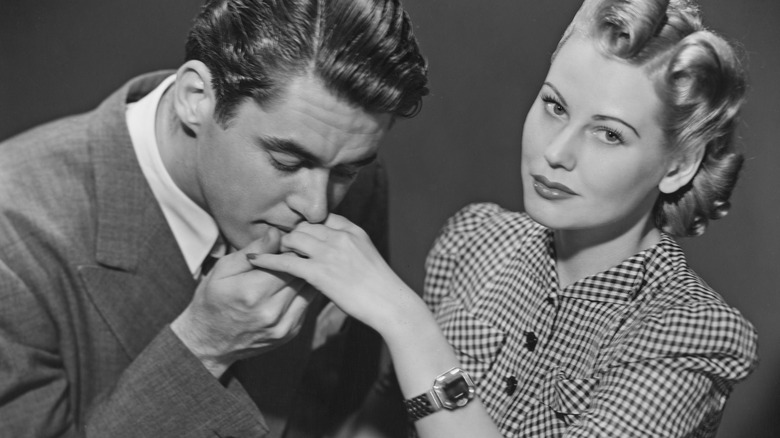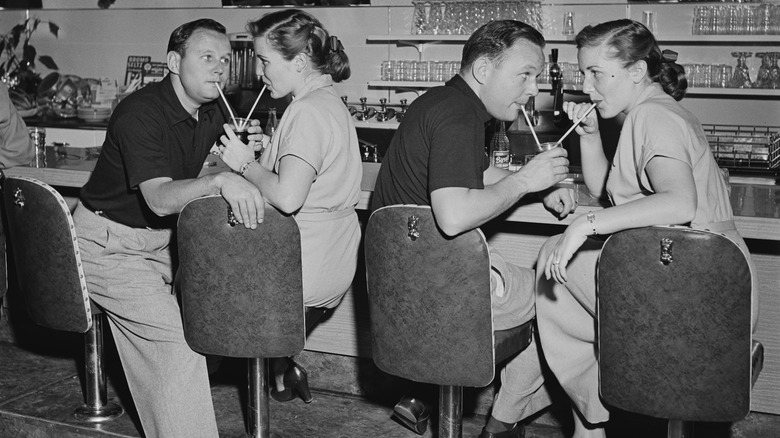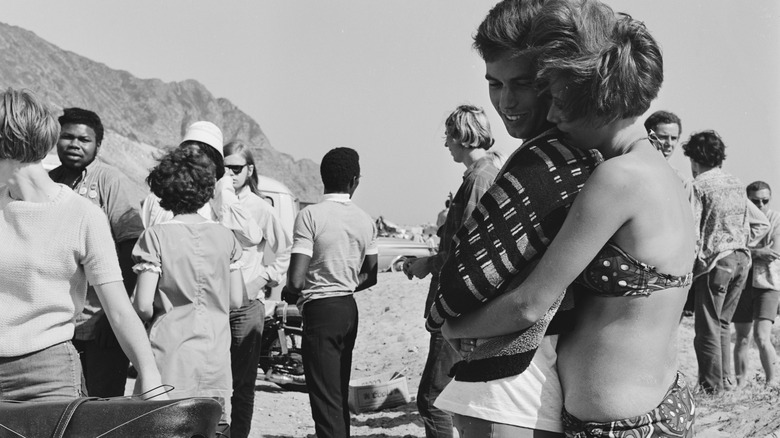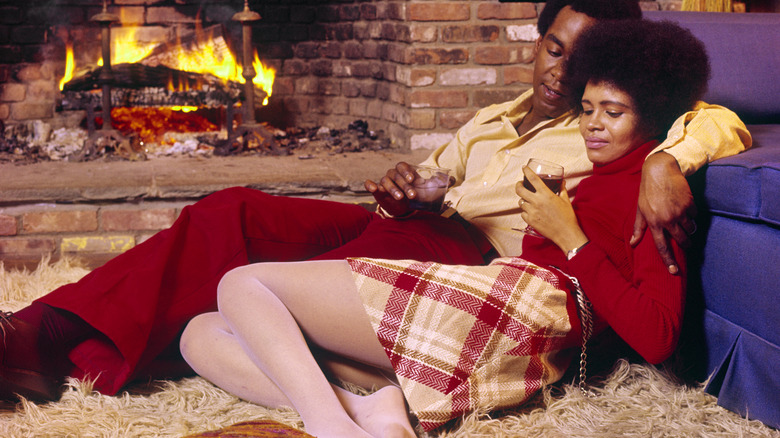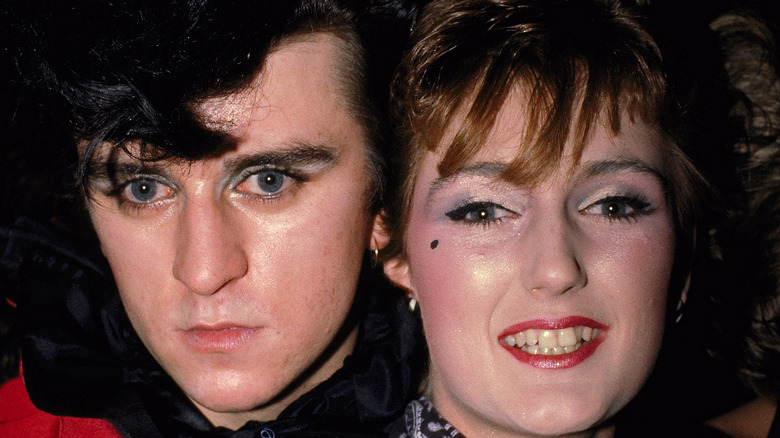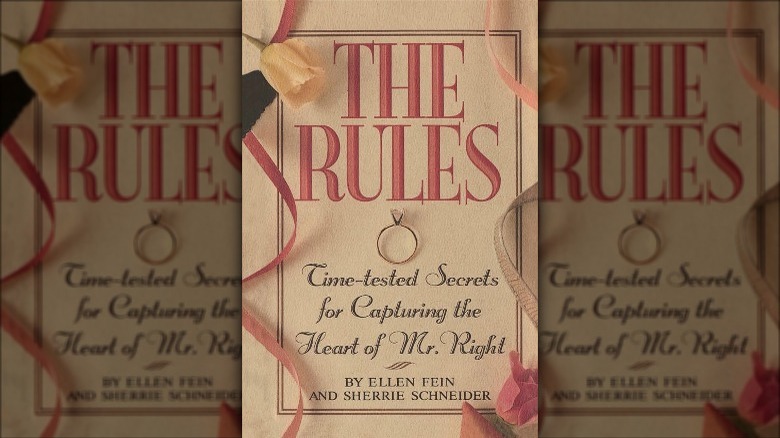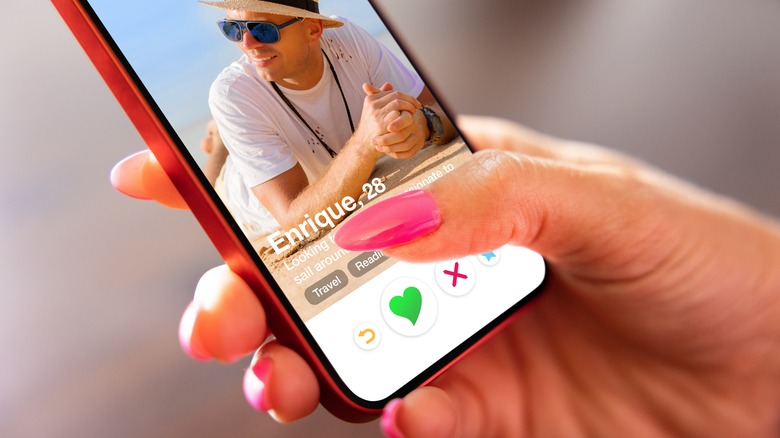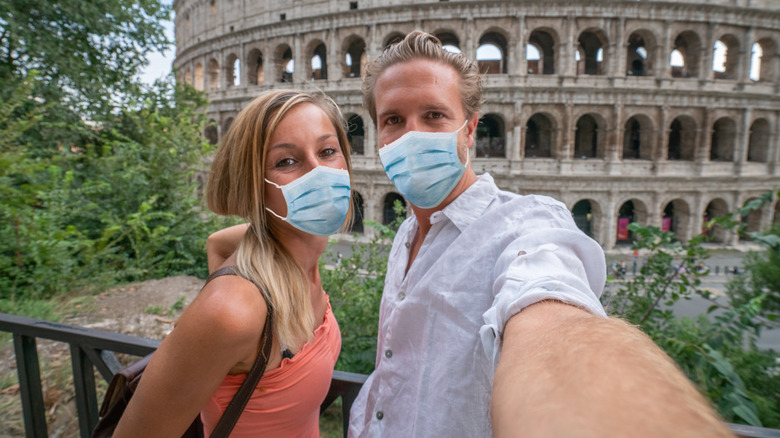100 Years Of Dating
We may receive a commission on purchases made from links.
The history of dating starts about 100 years ago, give or take. It's only since the turn of the 20th century that there was even a word for it. As legend has it, "dating" was first used in an 1896 newspaper column to refer to filling up the dates on one's social calendar. Until around the 1850s, families in the Western world had an enormous say in whom their children married. Automobiles didn't yet exist, the great migration to American cities had not yet begun, and women were still "property," with little say in their affairs, literally. To the extent dating is aimed at selecting the right mate, there was simply no need for it. Folks paired off; that was that.
As women gained autonomy — coinciding with industrialization and urbanization — the notion of "family-sanctioned" courtship gave way to single people getting to know one another, presumably to select a spouse, albeit not necessarily. Over time, the "spouse seeking" angle became only less relevant as dating became an accepted pastime, as opposed to a means to an end.
By the time American columnist George Ade came up with the "d" word in 1896, dating was still in its infancy, much of it still taking place in the family living room. But times were quickly changing, and even more intensely, as World War I took hold, sending women into the workplace, thereby increasing their fortunes and freedom of movement. When a constitutional amendment gave American women the right to vote in 1920, there was no turning back.
1920-1929: Dating is the new courtship
Although the median age for marriage during the 1920s was just under 22 for women, per U.S. Census Bureau data, the way couples got there was now radically different from how it had once been. By then, the notion of "courtship" as a family-driven ritual was all but out of steam. In fact, single people were discovering that relationships didn't even have to be exclusive, at least not from the get-go.
Whereas courtship had been a formal process with marriage being the most acceptable endgame for all involved, dating had evolved to be about having a good time together and not necessarily just in polite conversation. For one thing, people realized they also liked to dance together, with other people present — lots of other people, and in dance halls, which happened to be at their height of popularity at the time.
In addition to dancing, dating typically involved parks, fairs, speakeasies, and just going for a drive. The burgeoning movie industry not only made theaters a prime dating venue but also a place to learn about things your parents and teachers would probably never tell you. For the first time in history, meeting potential suitors through friends, social activities, and sometimes even while on dates with others was becoming an acceptable norm. So too, was premarital sex, with as many as 34% of women who came of age in the 1920s saying they engaged in it (via The Mob Museum).
1930-1939: The dawn of dating etiquette
By the 1930s, with dating deeply entrenched in American culture, came a natural inclination to reign it in with rules. And so it was that various dating customs and mores came into being. These included lots of conflicting advice on whether — and to what extent — one should play "hard to get" versus using friendliness or flattery to attract a mate, and which party is responsible for calling upon whom (usually men who did the calling, but women were starting to take initiative, and not all dating was even between men and women).
The appropriateness of public displays of affection was also brought into question, as well as just how friendly, open, or flirtatious one should or should not be to the waitstaff at a restaurant (it was never cool to flirt with your server). Naturally, with fewer marriages being arranged by families, the notion of the "spinster" took on a new meaning.
No longer did the term just mean one who spun yarns. Now it referred also to a woman who "failed" to marry by an appropriate age. And back then, the median age for women to marry was still under 22, despite marriage rates dropping during the Great Depression, which ran all throughout the 1930s. In that sense, the Great Depression could be viewed as an auspicious development in the history of dating. It didn't stop people who wanted to get married young from doing so, but it did offer a reason for many to evade commitment for longer.
1940-1949: Dating was motivated by a desire to marry
Flusher financial times following the last gasps of the Great Depression in 1939 seemed to fuel a renewed interest in marriage — and at a younger age. Between 1940 and 1949, the median age for a woman to marry in the U.S. dropped to 20. But that didn't actually spell trouble for dating culture. Rather, it just meant that dating started younger (often by one's teens) and became even more important as a means of measuring social status.
It also meant a stricter approach to "rules" about how things should proceed. By the 1940s, dating etiquette had put men firmly into the driver's seat, literally and figuratively. Men were supposed to initiate and set the pace for the relationship — if one was to proceed at all. And that was less of a given than it had been in decades past, especially with dating having developed into something of a competitive "sport" for all teens to prove how popular they were.
There also came to be etiquette concerning such matters as how much notice was considered appropriate before a date (at least several days), where a date should begin (at the woman's front door), and who should pay (the man). Custom also came to dictate when to make family introductions, with "going steady" becoming a logical, expedient prerequisite. At the same time, parents began discouraging their kids from foreclosing on their dating opportunities by committing to a relationship prematurely.
1950-1959: Dating started early and ended early
By the time the 1950s arrived, the median age of marriage for women in the U.S. was 20. Although even at its lowest — towards the end of that decade — that rate never dropped below 20. Americans were nevertheless heading to the altar at younger and younger ages.
Notwithstanding increasing societal pressure to marry young, along with the role that dating had come to play in making that happen, dating was becoming more about going steady — but only for the sake of going steady and all that had to offer (certainly, better odds of premarital sex, for one). In other words, going steady no longer implied an intention to "make it official" via marriage. Rather, going steady was seemingly a way of getting to know a partner and then comparing them to other partners one had gone, or would later go, steady with.
A New York Times Magazine story from 1953 recommended that every teen make certain to date multiple people, around "20 to 50" to be exact, before deciding whom to settle down with (via Boundless). Complicating matters, however, was the fact that World War II's formidable death toll on young American men meant there were simply not enough of them to go around. By default, women had to face the possibility of remaining single longer or even indefinitely. But the effect that had on dating becomes apparent only in the next decade.
1960-1969: 'Sex and the Single Girl'
Notwithstanding that the median ages for U.S. marriage declined throughout the 1950s, marriage rates also declined and precipitously so. By the dawn of the 1960s, that rate had dropped by around half — to somewhere in the vicinity of where it had been during the Great Depression of the 1930s, per the Centers for Disease Control and Prevention. It remained at a plateau throughout the first half of the decade.
Since more women were not only remaining single but actually thriving as such, it was becoming increasingly impossible to credibly indoctrinate in women the notion that they "had" to date and marry young or else face a life of sad destitution. Women's rights, which had been percolating for many decades, had never been more relevant than in the 1960s, especially when it came to the right of women to abide by their own rules for dating. And no one knows that so well as the millions who voraciously consumed Helen Gurley Brown's groundbreaking 1962 tome, "Sex and the Single Girl," which advised women to become financially and emotionally independent.
As the 1960s progressed, women were increasingly encouraged and empowered to embrace and take charge of their sexuality, whether or not marriage was part of the deal. And for the first time in history, that sometimes involved the use of a computer. Not a home computer, which didn't yet exist. Rather, the 1960s was the dawn of computer programs designed to match singles.
1970–1979: The women's movement had limited mileage
Marriage rates climbed throughout much of the 1970s, but people were now waiting longer, thanks, in part, to the women's rights movement helping to empower women to construct the lives they wanted, with or without dating and finding a mate to marry. Of particular note, the 1973 U.S. Supreme Court decision in Roe v. Wade held that all married or single women have the constitutional right to choose abortion over continuing with an unwanted pregnancy.
Further, by the 1970s, the female contraceptive pill, which had first been approved by the FDA in 1960, was now in use by more than 13 million women, many of whom were single — thanks to 1967 legislation that, for the first time, allowed doctors to prescribe the daily pill to unmarried women. Not surprisingly, many women who may never have considered having sex before marriage were now doing so. By 1974, a mere 28% of married women said they waited until they were married to have sex — down from 42% at the end of the 1960s, per The New York Times.
At the same time, male-dominated chivalry-leaning rules of etiquette still applied to dating, including the notion that dating should take place at a venue outside the home and that women attending the date should dress ladylike and act tastefully. Hookup culture was still a long way off. But the rise of personal ads in newspapers and at the backs of magazines throughout the 1970s went a long way toward driving our culture in that direction.
1980-1989: Sex before marriage is practically a given
With reproductive freedoms having expanded throughout the 1960s and 1970s and more women taking advantage of what those freedoms afforded, by the time the 1980s rolled around, dating was pretty much now understood to include a sexual component. According to a 2007 study published in Public Health Reports, which tracked trends in premarital sex between 1954 and 2003, the '80s saw an uptick in premarital sex, with 76% of women having done so by 20 years old.
But the 1980s decade was also the dawn of the age of AIDS (Acquired Immuno Deficiency Syndrome), an incurable illness transmitted through bodily fluids. Initially, AIDS was believed to affect primarily gay men, those who used IV drugs, and the even rarer recipient of a blood transfusion. But by the end of the 1980s, a young heterosexual woman by the name of Alison Gertz was delivering extraordinarily effective public service announcements that anyone could contract AIDS and the virus that causes it. All it would take is one instance of unprotected sex.
Perhaps not surprisingly, this leveled a blow against sexual freedom, with the second half of the 1980s being characterized by a decrease in "social acceptance" of premarital sex. Nevertheless, marriage rates declined throughout the 1980s, and more people were delaying marriage than ever before — and for longer than in any previous decade of the 20th century. This suggests that notwithstanding legitimate fears of deadly consequences surrounding sex outside of marriage, dating's sexual component was going nowhere anytime soon.
1990-1999: The brief reign of 'The Rules'
In the late 1990s, The New York Times pointed to a decrease in teen pregnancy rates as evidence for changing sexual mores. What's never been clear, however, is whether this indicated a trend toward abstinence versus a growing interest in safe sex practices. What is clear, though, is that the mid-1990s ushered in a whole new set of extremely nit-picking rules regarding how women ought to conduct themselves while dating — if they had any hopes of ever getting married.
"The Rules," a 1995 book written for women by a pair of women, Ellen Fein and Sherrie Schneider, purported to reveal the secret to "capturing the heart of Mr. Right." The rules of dating involved making oneself seem unavailable, even if one was not. They also involved strategically withholding sex to increase one's perceived value as a potential wife. But even as more than two million copies of "The Rules" were sold, the marriage rate began its most steady decline to date, and American women were now waiting even longer — until their mid-20s — to get hitched.
Moreover, as much as "The Rules" may have intended to simplify dating, things were only becoming more complicated. For example, a 1997 story published in SFGATE bemoaned that, thanks to the women's movement, men no longer understood how to behave on dates. And by the mid-to-late 1990s, speed dating had been born, and online dating was getting ready for its close-up.
2000-2009: Welcome to the candy store approach to dating
The dawn of the new millennium brought with it enormous changes in dating culture. Reality television allowed us to watch without guilt as other people dated and hooked up — and despite the fact that we all knew, on some level, we were witnessing fiction, we still managed to catch FOMO. But we needn't have suffered for long because online dating was about to make finding potential dates easier than ever before.
With online dating, one didn't have to go to a bar in the hopes of meeting someone compatible. One had only to join a site and search among the many smiling faces and elaborate bios. At the beginning of the early aughts, eHarmony promised a soul mate for all who joined and answered its questionnaires. But along the way, there would be lots of dates with lots of people.
Whereas finding a date online had once had a negative stigma attached to it, it was now growing in popularity — so much so that by the end of the 2010s, online dating was often compared to being a "kid in a candy shop," according to The Guardian. That being said, during this decade, online dating was still considered a less desirable alternative to meeting potential dates organically. Those who succeeded didn't necessarily want to admit as much, either. Instead, some came up with fictionalized meet-cute stories. That would gradually change over the next decade, however.
2010-2019: Swiping right acquires new meaning
Single people used to meet their dates primarily through friends or family — but throughout the 2000s, websites devoted to connecting people for dating purposes began proliferating, and singles were starting to join in droves. By 2013, more people were finding their dates online than through any other means. And they were now not only proud of it, but they were happy to share their heartwarming online dating love stories as inspiration for others.
While general interest dating sites continued to dominate, niche sites increasingly began cropping up. Grindr, for example, which launched in 2009, became the leading men-only dating app throughout the 2010s. Tinder, which launched in 2012 and made "swiping right" synonymous with registering interest in someone you'd like to date, quickly became the default site for people interested in "casual dating," which, in many cases, is a euphemism for casual sex without any actual "dating."
Over time, however, Tinder has come to attract singles looking for all manner of situation-ships — for the simple reason that Tinder doesn't demand a subscription fee or require much more than a photo to get started. Despite that, online dating made dating more accessible to more people. However, it hasn't necessarily made dating any easier. Nearly half of all U.S. adults polled by the Pew Research Center in 2019 said that dating had only become more challenging throughout the 2010s.
2020 - Present: A strange and lonely place
Dating has never been easy, but who'd have guessed how hard the COVID-19 pandemic would make things? In a matter of weeks, legitimate public health concerns about the novel and sometimes deadly virus had the effect of closing the world down, at least for all non-essential businesses. As much as dating grew out of courting, which was driven by the evolutionary imperative to continue populating the world, it still couldn't really be considered "essential." Moreover, the thought of close contact with a stranger — or even with a non-stranger — had become downright terrifying to many.
Ultimately, the pandemic changed the way we date. It didn't cease altogether. But it was, in fact, hobbled. When the "curve" eventually flattened, dating had been forever transformed. Some say the pandemic inspired many to settle into relationships. According to the Pew Research Center, however, the pandemic did not measurably change what single Americans were looking for when it comes to dating, be it a lifelong partnership, a night of casual sex, or anything in between. Nevertheless, 28% of single adults who were not on the dating market in 2022 cited the virus as their limiting factor.
As of May 2023, COVID-19 is no longer a public health emergency. Some predict bacchanalian-style backlash. Others predict a resumption of 1990s-style "rules." Still, others maintain that the simple hardship of post-pandemic inflation will be the biggest factor in how dating transforms throughout the 2020s. So, who's right? Like dating itself, we're guessing it's a crapshoot.
